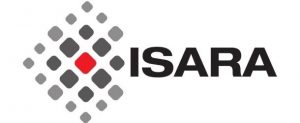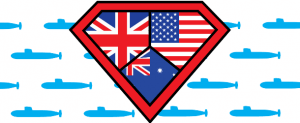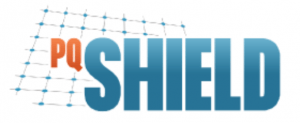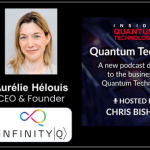Quantum News Briefs June 14: Quantum miners would yield ‘massive’ energy savings for blockchain; Why the White House says it’s vital to modernize your cryptography now; ISARA and The LightBridge Group partner to advance post-quantum cryptography in government + MORE

Quantum News Briefs June 14: Quantum miners would yield ‘massive’ energy savings for blockchain; Why the White House says it’s vital to modernize your cryptography now; ISARA and The LightBridge Group partner to advance post-quantum cryptography in government + MORE
Quantum miners would yield ‘massive’ energy savings for blockchain
 University of Kent researchers compared three quantum systems to an ASIC miner, and the quantum machines were demonstrably more energy efficient. Quantum News Briefs summarizes June 8 article by Tristan Greene in Coin Telegraph.
University of Kent researchers compared three quantum systems to an ASIC miner, and the quantum machines were demonstrably more energy efficient. Quantum News Briefs summarizes June 8 article by Tristan Greene in Coin Telegraph.
According to the team’s preprint research paper, the systems utilizing quantum computing demonstrably outperformed standard mining rigs in energy efficiency:
“We show that the transition to quantum-based mining could incur an energy saving — by relatively conservative estimates — of about roughly 126.7 TWH, or put differently the total energy consumption of Sweden in 2020.”
As the researchers point out, blockchain mining is one of the few areas of quantum computing where error correction isn’t such a big deal. In most quantum functions, errors create noise that functionally limit a computing system’s ability to produce accurate computations.
The very specific problem of blockchain mining doesn’t require a full-service quantum computing solution. As the researchers put it, “a quantum miner is not, and need not be, a scalable, universal quantum computer. A quantum miner need only perform a single task.”
Despite the potential energy savings, it bears mention that the researchers focused on a type of quantum computing system called a “noisy intermediate-scale quantum” (NISQ) system. Typically, however, NISQ systems only operate with about 50-100 qubits, though there doesn’t appear to be an industry standard.
However, according to the preprint paper, quantum miners should demonstrate “massive” energy savings at a size of around 512 quantum bits, or “qubits” — a term somewhat analogous to classical computing bits. Click here to read article in-entirety.
Why the White House says it’s vital to modernize your cryptography now
In 2022, the U.S. National Institute of Standards and Technology (NIST), which sets technology and cybersecurity standards that are often adopted globally, announced that all U.S. public agencies must identify and inventory any vulnerable systems from May 2023 onwards. Then, in March 2023, the White House released the National Cybersecurity Strategy, recommending that the private sector follows the same model in preparing its own networks for the migration to quantum resistance.
The G7, following directives from the White House, recently included the quantum threat in its key 21st Century challenges, and the director of the U.K.’s intelligence and cyber agency, Government Communications Headquarters (GCHQ), has called for the nation’s greater investment in quantum.
There may be a misconception that only entities involved in national security and defense will be impacted by the quantum threat. a wide range of strategic sectors will be targeted by threat actors. A few examples include:
**Healthcare And Pharmaceuticals
**Manufacturing Production Control
**Automotive Design
It’s essential to know where cryptography is being used across your organization so you can distinguish between internal systems and those within the supply chain. In addition, you should also consider the nature of your data, where and how it’s stored, its sensitivity and how it moves into, out of and through your organization. Assessing and prioritizing an inventory of systems that use cryptography, and identifying which require modernization, is important because post-quantum cryptography has differing demands for power, storage and bandwidth, which might clash with legacy protocols or latency requirements.
The good news is that quantum-secure cryptography standards are available, giving organizations a clear roadmap on their path to mitigating the quantum threat. Click here to read this article in-entirety.
ISARA and The LightBridge Group partner to advance post-quantum cryptography in government

ISARA, a leader in post-quantum cryptography (PQC) and cryptographic risk management, and The LightBridge Group, announced June 7 that their strategic partnership to advance post-quantum cryptography solutions and risk management services across the U.S. government. Quantum News Briefs summarizes.
ISARA has the right experience and the right technologies to address the government’s critical, quantum-safe needs. “The LightBridge Group brings decades of government experience and insight which, in addition to its quantum science and cybersecurity expertise, complements ISARA’s capabilities and roadmap plans. We warmly welcome this partnership and look forward to advancing PQC and cryptographic risk management, together, at the federal level,” stated Atsushi Yamada, CEO of ISARA.
“U.S. Government agencies are committed to preparing their IT systems for the arrival of cryptography-breaking quantum computers,” said Jonah Force Hill, Managing Director & Head of Client Services at The LightBridge Group. “We believe that ISARA has the right experience and the right technologies to address the government’s critical, quantum-safe needs.” Hill previously served as the director for cybersecurity and emerging technology on the staff of the National Security Council at The White House, where he was responsible for directing President Biden’s National Security Memorandum on post-quantum cryptography (NSM 10).
The LightBridge Group provides business consulting services for quantum technology companies. .They specialize in U.S. government procurement and contracting, commercial marketing and public relations, executive recruiting, and investment and M&A advisory services.
ISARA’s mission is to build a quantum-safe world. Founded in 2015, Canada-based ISARA specializes in cryptographic risk management and crypto-agile and quantum-safe security solutions and services for today’s information technology ecosystems. Click here to read news announcement in-entirety.
China leads tech race, highlighting need for AUKUS sharing, says Australian think-tank
 China leads research in 19 of 23 technologies set as priorities by the AUKUS defense partnership of Australia, Britain and the U.S., including hypersonics, electronic warfare and undersea drones, highlighting the need for Western allies to pool research results, an Australian security think-tank says.
China leads research in 19 of 23 technologies set as priorities by the AUKUS defense partnership of Australia, Britain and the U.S., including hypersonics, electronic warfare and undersea drones, highlighting the need for Western allies to pool research results, an Australian security think-tank says.
U.S. defense technology sharing is tightly controlled, and U.S. analysts have previously said bureaucratic hurdles could slow not only a AUKUS nuclear submarine program but also “Pillar Two” – a boost in collaboration between the nations in hypersonic and counter-hypersonic technology, quantum, AI and electronic warfare. Quantum News Briefs summarizes a June 5 article about the AUKUS statements.
The Australian Strategic Policy Institute (ASPI) said on Tuesday its survey of the world’s top science papers showed China led research in most of the technologies likely to come under the defence partnership’s so-called Pillar Two.
ASPI said its analysis of two million science papers showed Beijing had a commanding lead in both hypersonics research and the technology to counter it, electronic warfare and key undersea capabilities. Click here to read the June 5 Reuters article in-entirety.
Sandra K. Helsel, Ph.D. has been researching and reporting on frontier technologies since 1990. She has her Ph.D. from the University of Arizona.







 Ali El Kaafarani, Founder and CEO of
Ali El Kaafarani, Founder and CEO of 











